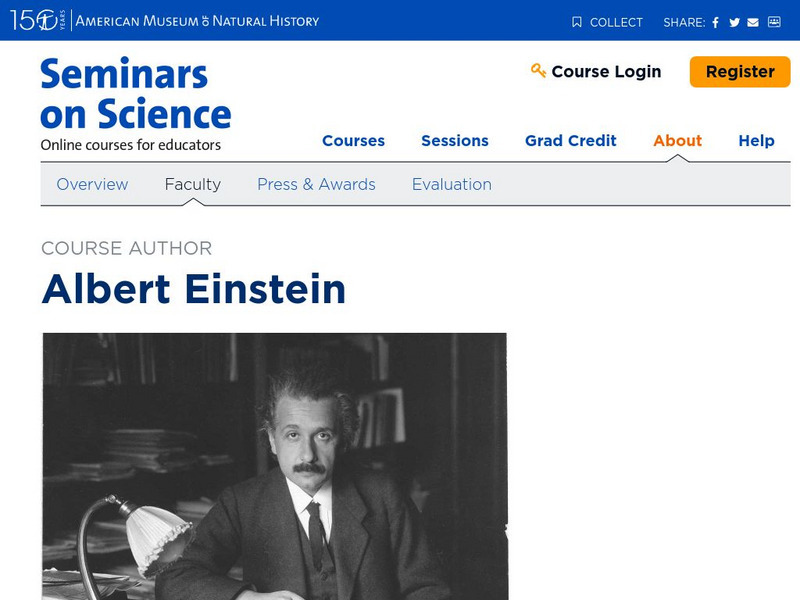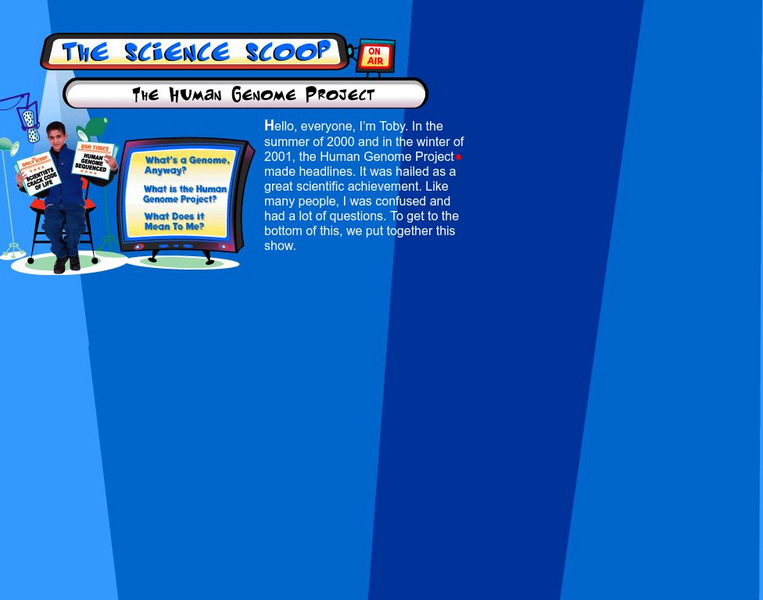American Museum of Natural History
American Museum of Natural History: O Logy: Beyond T. Rex
Launch this OLogy link to find a dinosaur cladogram, an illustration that organizes dinosaurs into groups based on the unique characteristics they share, like a three-toed foot.
American Museum of Natural History
American Museum of Natural History: O Logy: What's the Big Idea? Astronomy
An introduction to key concepts about the science of astronomy. With interactive flash cards that open in new windows to help you learn more.
American Museum of Natural History
American Museum of Natural History: O Logy: If Rocks Could Talk: Obsidian
A simple explanation of how obsidian rock is formed.
American Museum of Natural History
American Museum of Natural History: O Logy: If Rocks Could Talk: Granite
A simple explanation of how granite rock is formed.
American Museum of Natural History
American Museum of Natural History: O Logy: If Rocks Could Talk: Limestone
A simple explanation of how limestone rock is formed.
American Museum of Natural History
American Museum of Natural History: O Logy: If Rocks Could Talk: Sandstone
A simple explanation of how sandstone rock is formed.
American Museum of Natural History
American Museum of Natural History: Profile: Dr. Charles Liu
A biography of Dr. Charles Liu, an astrophysicist at the American Museum of Natural History focused on his drive to become an astrophysicist.
American Museum of Natural History
American Museum of Natural History: Ology: Moving Mammals
Students explore the different ways mammals move by observing them walk, hop, gallop, swim and swing in animations. Facts about habitat and structure are also included in these animations.
American Museum of Natural History
American Museum of Natural History: Profile: Albert Einstein
Read about the life and work of Albert Einstein, including details from his childhood and what he said about life just before he died.
American Museum of Natural History
American Museum of Natural History: Ology: Cosmic Cookies
Roll your mouse over the planets in our solar system to read a vignette about each. Then, link to the recipe for directions to create miniature planet cookies that look like the real thing.
American Museum of Natural History
American Museum of Natural History: Ology: Milky Way Galaxy
How big is a billion? Find out some interesting facts about our galaxy, the Milky Way, and its billion stars.
American Museum of Natural History
American Museum of Natural History: O Logy: A Sea of Questions About Mangroves
An engaging piece featuring questions that scientists ask when they are researching the seas. Click on the red asterisks and discover even more information!
American Museum of Natural History
American Museum of Natural History: O Logy: Stuff to Do: Start a Rock Collection
Step-by-step details for building a rock collection, beginning with collecting specimens, moving on to observing and sorting rocks, and finishing with displaying the collection. Includes a data table for keeping track of all your...
American Museum of Natural History
American Museum of Natural History: O Logy: How Did the Universe Begin?
Bite-size introduction to two scientists-Hubble and Lemaitre-who played key roles in formulating the theory of the origin of the universe known as the big bang. Includes an interactive timeline on which you can plot out the approximate...
American Museum of Natural History
American Museum of Natural History: O Logy: What's the Big Idea? Earth
Find an overview of the Earth and some of the approaches scientists take in studying it, in this click-through series of short perspectives on the topic.
American Museum of Natural History
American Museum of Natural History: O Logy: Stuff to Do: Moon Watch Flip Book
Hands-on activity shows you how to make a flip book of the moon using close observation skills and simple materials. Includes animation that lets you view the moon in action through its different phases, worksheets, and illustrated...
American Museum of Natural History
American Museum of Natural History: O Logy: Light, Matter, Energy
Learn how Einstein revolutionized how we think about light, matter, and energy by asking challenging questions and questioning old ideas.
American Museum of Natural History
American Museum of Natural History: O Logy: Stuff to Do: Light Quest
Light Quest activity, for two to four players, designed to explain how atoms create light and where photons come from.
American Museum of Natural History
American Museum of Natural History: O Logy: Human Genome Project
Get the science scoop on the Human Genome Project by considering the answers to these three questions: What is a genome? What is the Human Genome Project? What does it mean to me?
American Museum of Natural History
American Museum of Natural History: O Logy: Quest for the Perfect Tomato
What is your idea of the perfect tomato? Learn about the principles of selective breeding and genetic modification and their contribution to the quest for tomato perfection.
American Museum of Natural History
American Museum of Natural History: O Logy: Stuff to Do: Dna in a Blender
Follow these illustrated instructions to conduct a simple experiment in separating DNA from an onion!
American Museum of Natural History
American Museum of Natural History: O Logy: Meet the Paleont O Logist: Mark Norell
Interview with paleontologist Mark Norell provides insights into his research interests, his career preparation, and his ideas about a range of paleontology-related topics.
American Museum of Natural History
American Museum of Natural History: Ology: Astronomy: In Pictures: Beyond Planet Earth
What would it be like to travel across the solar system and explore space? Take a look at some of the places that humans might go to someday, and the questions that scientists are asking.
American Museum of Natural History
American Museum of Natural History: Ology: Brain: Boost Your Brain Power!
Test how good and how quick your visual memory is in these games of recall.



















